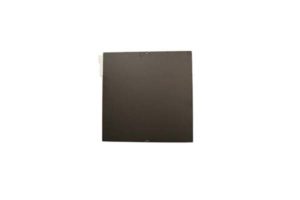The working principle of the amorphous silicon flat panel detector: X-rays are first converted into visible light by fluorescent medium materials, then the visible light signals are converted into electrical signals by the photosensitive element, and finally the analog electrical signals are converted into digital signals by A/D.
The specific principle of the amorphous silicon flat panel detector is embodied as:
Before exposure, make the silicon surface store cations to generate a uniform charge, resulting in an electron field on the silicon surface;
During the exposure period, electron-hole pairs are generated in the silicon, and free electrons dissociate to the surface, resulting in a potential charge image on the silicon surface. The charge density at each point is equivalent to the local X-ray intensity.
After exposure, the X-ray image is stored in each pixel;
The semiconductor converter reads each element and completes the analog-to-digital conversion.
Advantages of amorphous silicon flat panel detector:
High conversion efficiency;
Wide dynamic range;
High spatial resolution;
The X-ray absorptivity is high in the low resolution area (because its atomic number is higher than that of amorphous selenium);
Strong environmental adaptability.
Disadvantages of amorphous silicon flat panel detector:
DQE is inferior to amorphous selenium at high doses;
There is a slight scattering effect due to the fluorescence conversion layer;
The sharpness is relatively slightly lower than that of amorphous selenium.
We at Newheek provide 14*17, 17*17 wired and wireless amorphous silicon flat panel detectors. If you are interested, please feel free to contact us.

Author:Lillian
Tel:+86 18953679166
Email:service@newheek.com
Company:Weifang Newheek Electronic Tech Co., Ltd.